Home ficuses are characterized by a wealth of species. One of the most interesting and popular is the type of Elastic, or, as it is called in another way, rubber-bearing, which was imported from India.
The plant has been popular among domestic flower growers for many years, and this is not surprising, because the shiny and fleshy leaves of the flower adorn and refresh any interior. In addition, the rubber ficus is absolutely unpretentious and grows well at home, so taking care of it will not take much time and effort even in the absence of experience.
Content
Characteristics of rubber ficus and species diversity
Ficus of this species, growing in a natural habitat, differs significantly from a decorative specimen. If in the wild a tree can grow up to 60 m in height, then in a room its growth rarely reaches even 2 meters.
The tree is characterized by leathery fleshy oval leaves with a pronounced central vein, which grow quite large. The leaves of dark green or mottled color pointed at the ends are arranged alternately.
Young leaves of the tree have a brownish-red hue and a similar color for the stipule, which disappears over time. The tree belongs to flowering plants, however, it blooms only in nature, since it is pollinated by insects of an exclusively certain species. The result of flowering trees are small, inedible fruits - Siconia.
Ficus has several varieties, the most popular of them are:
- Melanie. An artificially bred variety that is distinguished by its miniature size and dense foliage.
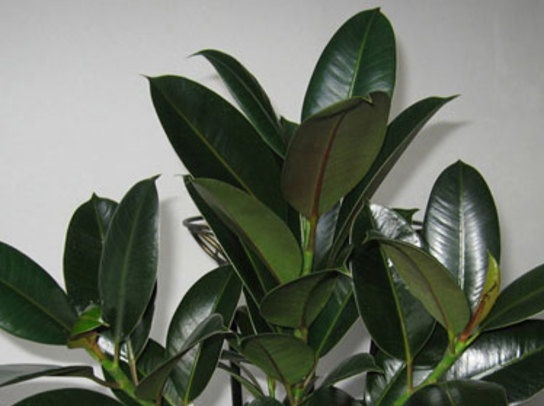
Melanie - Belize It has a distinctive feature in the form of white-pink stains on the edges of the sheet plate.
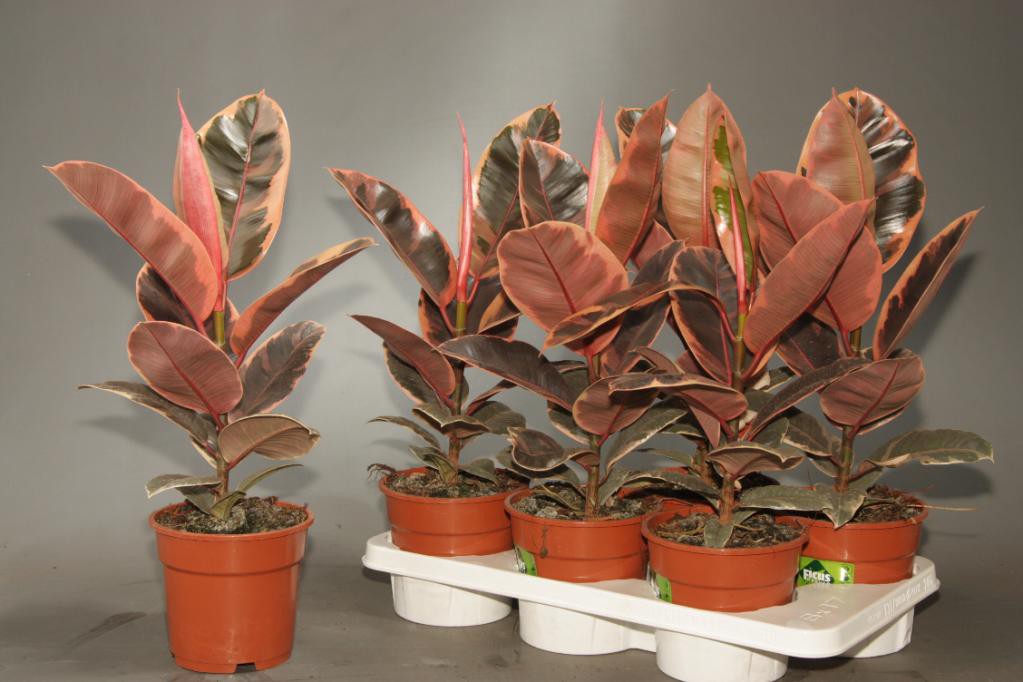
Belize - Robusta Tall and branchy tree with dark green foliage.
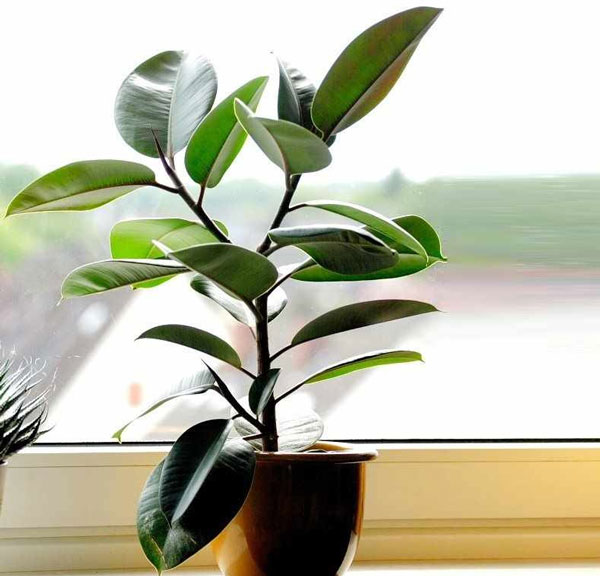
Robusta
The intricacies of home care for rubber ficus
Ficus is an unpretentious plant, however, in order to grow a healthy and beautiful tree, you must adhere to some recommendations for its care.
Lighting
The tree responds well to bright diffused light, but it does not tolerate exposure to direct sunlight. Ficus can also grow in partial shade, but then its development will slow down significantly, and the lower leaves will become sluggish and will fall over time.
Temperature
Ficus is a heat-loving plant that does not respond well to low temperatures and drafts. The optimum temperature for maintaining the tree ranges from 18 - 25 °. However, in winter, when heaters dry the air, the flower can grow at 15 °, if its soil is insulated with foam.
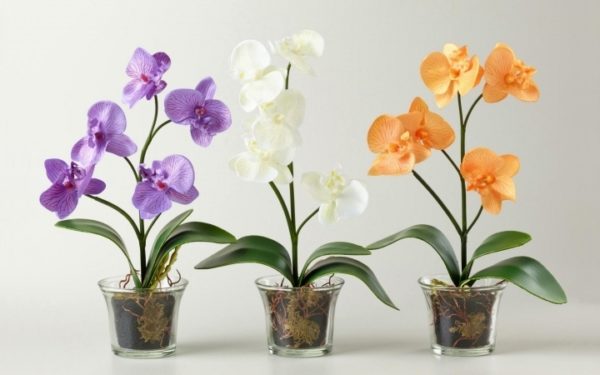 You may be interested in:
You may be interested in:Accommodation
The tree does not like frequent permutations and a sharp change in the conditions of detention, which must be taken into account when placing it. The plant must be placed in a well-lit place, away from heating appliances and drafts.A great place to place the ficus will be the western and eastern window sills.
Watering and spraying
Water the plant only after the topsoil has completely dried out. As a rule, one or two irrigation per week is enough. For irrigation, you need to take well-defended warm water.
In the summer, the leaves of the tree must be sprayed, this will help keep the air humidity at an optimal level. But in winter it is better to refuse spraying and switch to wiping the leaves with a damp soft cloth or sponge.
Fertilizing and types of fertilizers
The period of active growth of the plant lasts from April to May, it is at this time that the tree needs additional feeding once every 14 days.
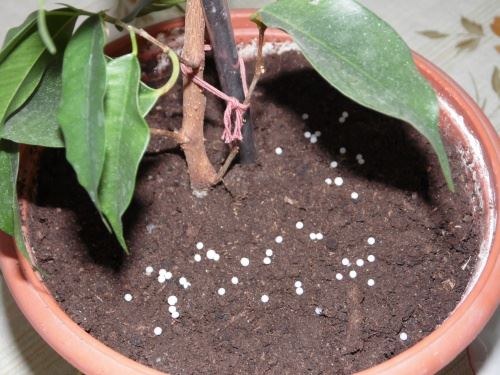
Ficus responds well to alternate feeding with mineral and organic fertilizers. As a mineral fertilizer, nitrophosk diluted in water can be used in the proportion of 1 teaspoon to 1 liter of water. To supply the tree with organic matter, the soil is fertilized with mullein infusion. You need to apply any type of fertilizer to the previously moistened soil. During plant nutrition, fertilizers should be avoided on the leaves and their sprouts.
Diseases, pests and treatments
Ficus is quite hardy and resistant to diseases and pests. However, improper care reduces the protective ability of the tree.
Typically, a plant responds to poor leaf fall care. The reason for the discharge of green mass may be improper room temperature, drafts, excess moisture, lack of nutrients and lighting.
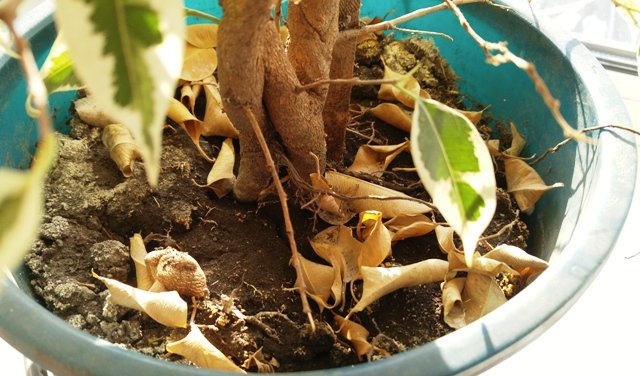
Excessive watering leads to the appearance of brown spots on the leaves and their falling. In more severe cases, an excess of moisture becomes the cause of rotting of the root system. To fix the problem, it is necessary to transplant the plant, having previously removed all rotted roots, and to establish watering.
Red spots on the leaves indicate that the flower is under the influence of direct rays of the sun. It is enough to move the tree to a place with diffuse lighting, and the problem will go away by itself.
Deformation of the edges of the leaf plate indicates damage to the root system during a flower transplant. Watering with Kornevin and foliar top dressing will help solve the problem.
The appearance of silver spots on the leaves, which later acquire a brown hue, indicates that the flower is infected with thrips. The thrips larvae live in the leaves of the tree, eating them. You can get rid of thrips by treating the surface of the flower with Aktara's solution and spilling the soil with it. Processing is carried out 4 times, with an interval of a week. Florists also recommend processing all the flowers in the room, as thrips are able to move through the air.
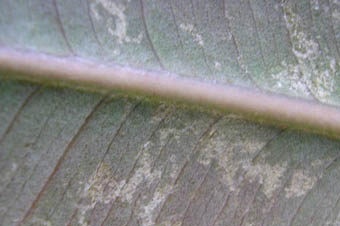
In case of infection of the flower with a spider mite, white spots and a thin web appear on its leaf plates. To get rid of the spider mite, the tree must be washed under a warm shower and treated with Fitoverm 3-4 times, with an interval of 10 days.
Hygiene
Dust settles on the fleshy leaves of the flower quite often, which noticeably worsens the appearance of the plant. Therefore, flower growers recommend washing the ficus under a warm shower once a month, after covering its soil with a plastic bag.

Also, as the dust settles, the leaves can be wiped with a damp sponge or a soft cloth. In addition, to give a bright shine to the leaves will help their processing with a cloth dipped in non-alcoholic beer.
What soil is needed
The tree prefers fertile and porous soil. The soil for the plant can be mixed independently or you can buy a ready-made soil mixture for ficus in a specialized store. You can also use universal soil with the addition of river sand.
To prepare the soil, it is necessary to mix river sand, sheet, peat and sod land, in a ratio of 1: 1: 1: 1.
Propagation and transplantation of a flower at home
It is better to transplant a flower in the warm season; A great time for a transplant is spring or early summer. Young ficus requires an annual transplant, but a mature tree can be replanted every few years, as the earthy substrate is depleted in a container with it. It is necessary to transplant the tree into a pot that is 5 cm larger in diameter and 6 cm deeper than the previous one.
Transplantation Stages:
- Put 3-4 cm of the drainage layer on the bottom of the container. For drainage, you can use broken brick, small gravel or pebbles.
- Lay a layer of earth over the drainage.
- Carefully, without damaging the roots, remove the ficus from the old container and place it in a new pot along with an old lump of earth (transshipment method).
- Pour new soil into the pot so as to fill all the voids.
- Water the plant.
Ficus, as a rule, quickly takes root in a new substrate, which is noticeable by its active growth.
The tree propagates by cuttings and layering. It is believed that a flower can propagate by leaf, but this is nothing more than a myth, such a method of propagation will never lead to shoots.
 You may be interested in:
You may be interested in:The propagation method using cuttings is most often used, because it is the most reliable and easy. A stalk 10-15 cm long is cut from the stem or apex at an angle so that 1 cm remains to the nearest node. Almost all leaves, except the top 2, are removed from the stalk.
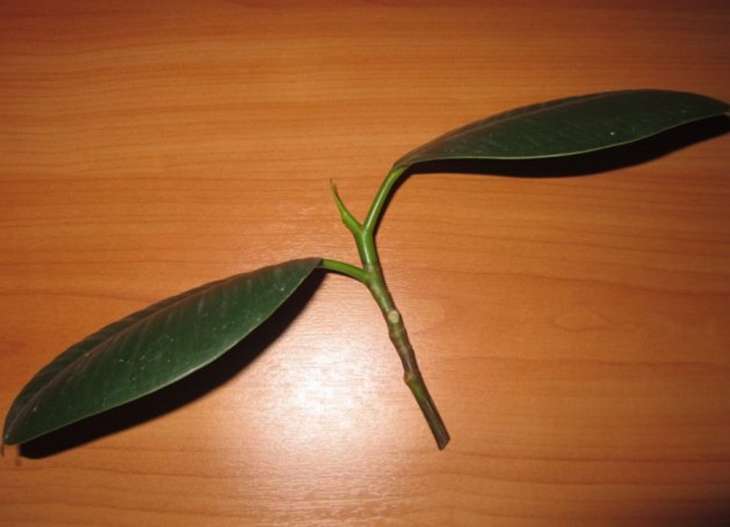
The shank must be washed under running water until all the milky juice comes out. It is recommended to twist the remaining leaves on the handle into a tube and fix it so as to reduce the evaporation of water.
You can root the cuttings either in water or in the ground, but flower growers recommend staying on rooting in the soil. With the method of rooting in the soil on the ground part of the flower you need to pull a bag of polyethylene. As a rule, the roots appear after 2-5 weeks, and with them young leaves.
Common Growing Questions
Ficus is an unpretentious plant, but during its cultivation, one way or another, questions arise, especially for beginning gardeners.
Ficus elastica is a decorative culture that, with proper care, will become an adornment of any room, whether it be an apartment, a house or an office.

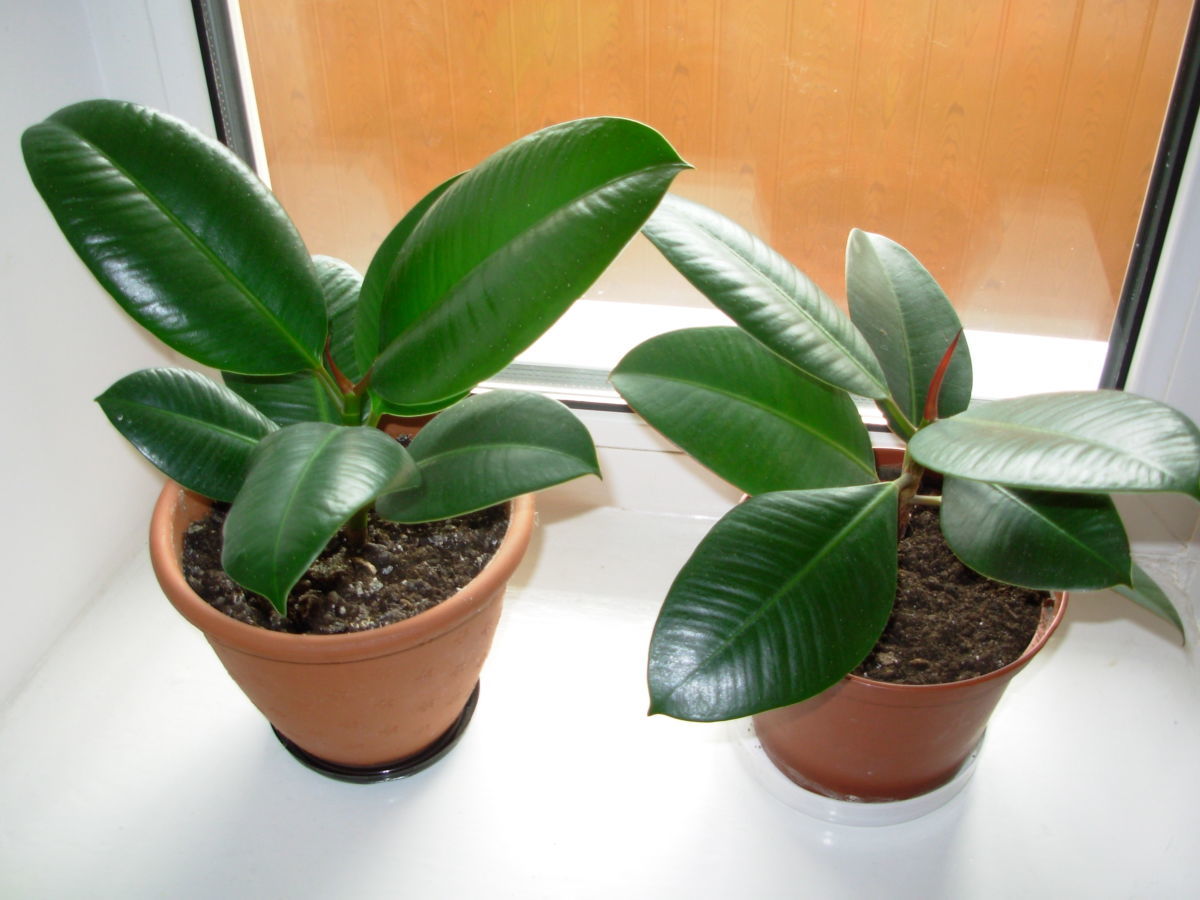

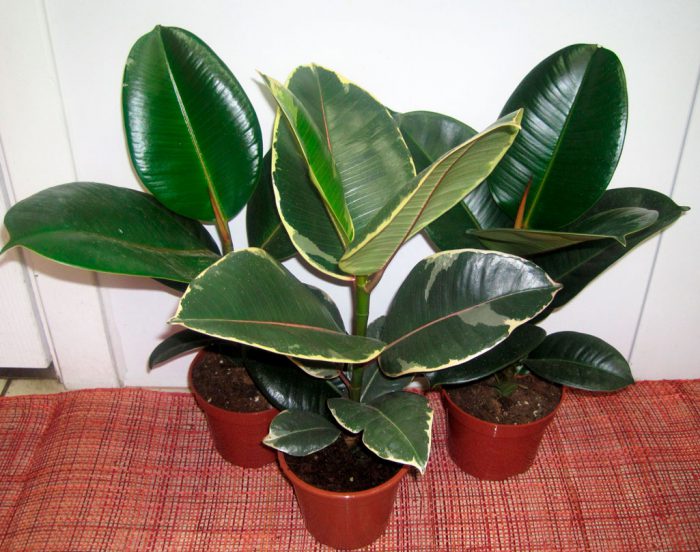



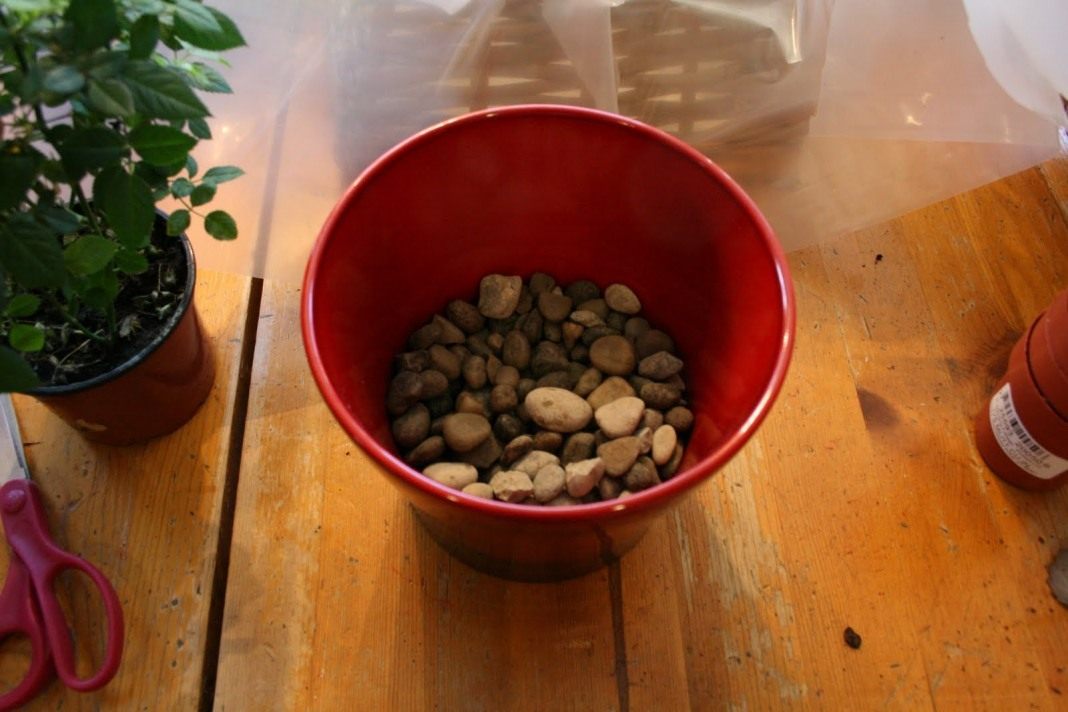
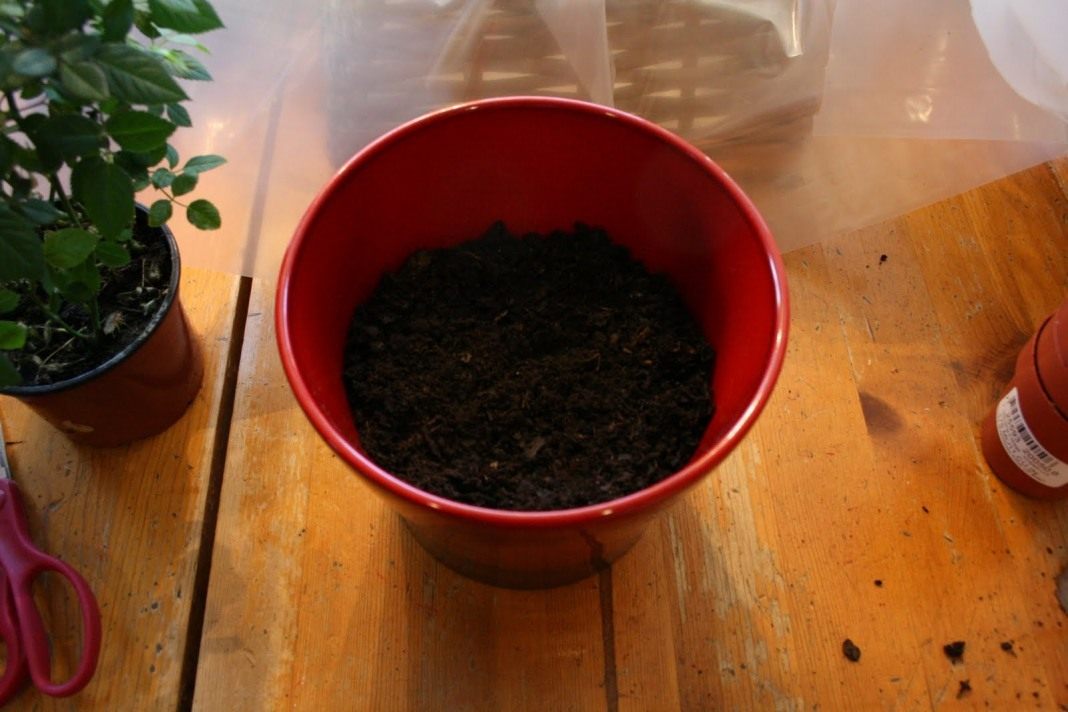
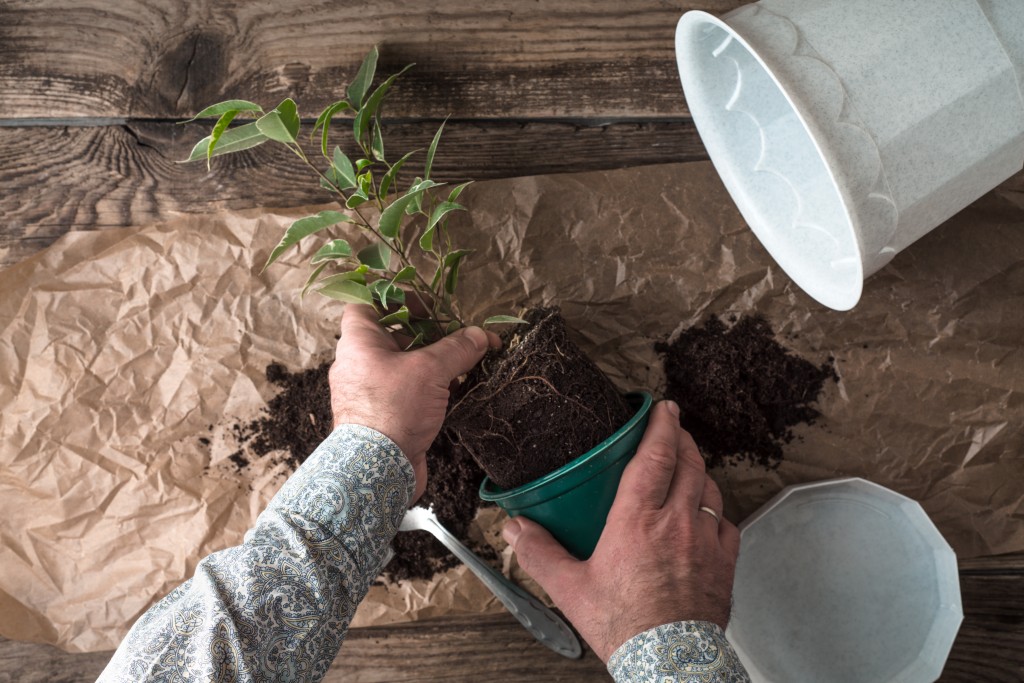
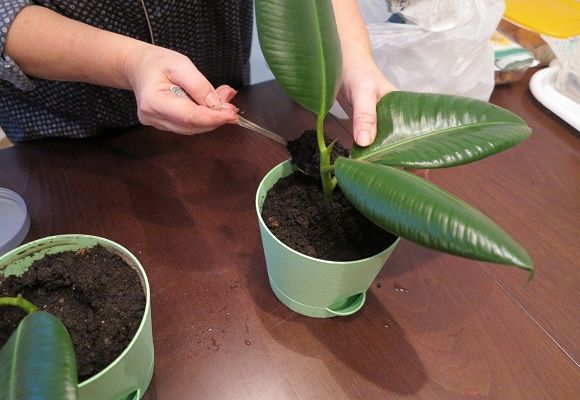
 Sow in the ground, without seedlings: 10 beautiful and unpretentious flowers
Sow in the ground, without seedlings: 10 beautiful and unpretentious flowers Platicodon planting and outdoor care
Platicodon planting and outdoor care Hosta - planting and care in the open ground in the Urals
Hosta - planting and care in the open ground in the Urals Oleander - care and growing at home
Oleander - care and growing at home